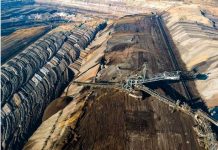“I think the solution that will get put in place in BC will be the smaller scale, barge-based solution. I wouldn’t be shocked if all the other facilities get strung out and we just have these barges popping up and it becomes the preferred solution.”
“It would make much more sense to build several smaller facilities that can still total 2 or 3 BCF of exports a day, rather than building 2 or 3 or 4 BCF a day mega-facilities like everybody is excited about,” Weiss says.
Weiss has studied global LNG for more than ten years, advising his institutional clients how to profit from the fast growing industry.
He will be speaking at my LNG Investment Conference in Vancouver B.C. on September 25th. The conference is open to the public, and meant for retail investors to better understand how Canada’s LNG export industry will develop. You can register at www.ogiblngconference.com.
Weiss suggests that the majors are seeing a strong potential for large scale LNG exports to cause a huge run up in western Canadian gas prices, removing most of the profit for the multi-billion dollar export plants.
“You’re in a region of BC that produces just over 3 BCF a day and a country that produces something like 13.7 BCF a day. Now you’re looking to build a potentially 4 BCF a day facility—a single facility that could be over 20% of the country’s natural gas production.
“Most of the proposed facilities are massive compared to the potential available gas. There is actually a lot of commodity price risk if you open a large facility.”
He said the majors would rather build large scale LNG facilities in the Gulf of Mexico where they don’t have to worry about impacting local gas supplies and prices—that’s one of the reasons they’re dragging their feet in B.C.
Weiss says almost all the major oil companies have gone to the consortium model—with 2-3 partners. He says majors aren’t building large LNG facilities on their own anymore, given the cost overruns in Australia.
And when you talk of just one facility being 20% of all Canadian production, and with 2-4 facilities that size now in process, a natural gas price spike doesn’t sound so far-fetched.
“That just creates too much concern for them (the majors),” says Weiss. In a worst case scenario, he says “you can end up with what we have in the US where we have now 16 BCF a day of LNG import facilities and we import about .6 BCF a day. You can have the same problem in reverse.”
Weiss adds that his research shows the smaller scale LNG projects would actually create more ongoing jobs than the mega-projects for British Columbia.
As a general rule, he suggests each BCF of LNG exports will create 15,000 direct jobs—40% in construction, 20% extracting the gas (mostly Alberta jobs) and the rest in pipelines and gas distribution. Give that a multiplier of 3 for the general economy, when the workers spend their paychecks on groceries, housing, entertainment and more, and the economy can quickly generate 45,000 jobs per BCF/d of natural gas production.
The smaller scale LNG projects will cost roughly half of a big facility, but for ongoing jobs after the facilities are actually built, he says smaller scale projects are more labour intensive.
“It’s actually more jobs per million tons a year production—i.e., if you build a massive 10 million ton a year facility (7.5 million tons per year, or mtpa=1 bcf per day) some of those will only have 200 or 300 people working; whereas, if you build a 1 million ton a year facility you might have 30 or 40 people.”
Natural gas producers and service companies listed on the TSX will present their investment merits to investors. Investors can meet with these senior management teams directly during breaks.
SEATING IS LIMITED. Registration is $49 and includes two-month free membership to my premium stock picking service. Register today at www.ogiblngconference.com
P.S. A major new catalyst was just announced—this morning—for my my # 1 natural gas stock, and it now has the stock trading near its 52-week high. What’s the catalyst? A highly accretive Joint Venture that’s going to create an unbelievable amount of money for my natural gas pick. What’s more—a second big catalyst is coming up in less than 2 weeks—on September 15. That’s why I’ve put together my full research on the play…I explain everything you’ll need to know to capitalize well in advance, here in this brief presentation. That’s everything from how the company’s payouts on production are some of the fastest I’ve seen (even at these low natural gas prices)…to what this “fast growth phenomenon” could mean for the stock. Get the full development here.








